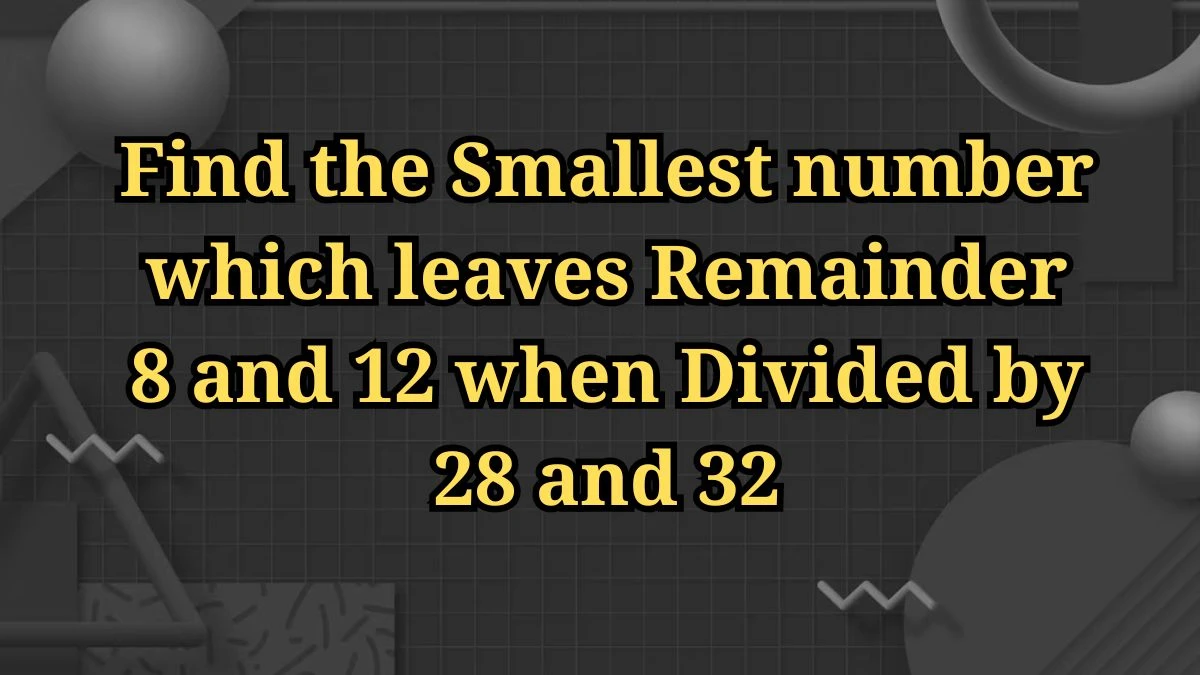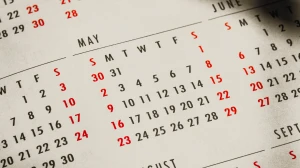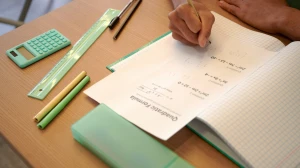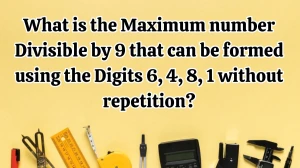Find the Smallest number which leaves Remainder 8 and 12 when Divided by 28 and 32
by
Updated Jun 20, 2024

Find the Smallest number which leaves Remainder 8 and 12 when Divided by 28 and 32
To find the smallest number that leaves remainders of 8 when divided by 28 and 12 when divided by 32, we can use the method involving Euclid's lemma.
Let the required number be x
Using Euclid's lemma, we express x in terms of these conditions
x = 28p + 8 (where p is a quotient)
x = 32q + 12 (where q is another quotient)
Equate the two expressions
28p + 8 = 32q + 12
To find a relation between p and q
28p = 32q + 4
7p = 8q + 1
To find integer solutions for p and q, we use the relation p = 8n − 1 and q = 7n − 1, where n is a natural number
Substitute n=1 to get specific values
p = 7 q = 6
Substitute p back into the expression for x
x = 28x7 + 8
x = 196 + 8
x = 204
Therefore, the smallest number that satisfies both conditions, leaving remainders 8 when divided by 28 and 12 when divided by 32, is 204.
How to Find the Smallest Number with Remainders?
To find the smallest number that satisfies specific remainder conditions when divided by two different numbers, a methodical approach using modular arithmetic is employed.
- The problem typically specifies two divisors and the remainders the number should leave when divided by each of them.
- Using modular arithmetic, we express the conditions mathematically. Let x be the unknown number.
- Euclid's lemma helps in formulating equations involving these congruences. It allows us to express x in terms of its divisors and remainders, leading to a system of linear Diophantine equations.
- By manipulating the equations derived from Euclid's lemma, we find expressions for x that satisfy both conditions simultaneously. This involves finding suitable values for the variables p and q that represent quotients in the equations.
- To find the smallest possible x, we typically solve for the smallest non-negative integer solution that satisfies the congruences. This often involves substituting values and checking divisibility conditions until the smallest x that meets all criteria is identified.
- Once a candidate for x is found, it should be verified by checking that it indeed satisfies both original congruences. This ensures that the solution is correct and meets all specified remainder conditions.
- The process concludes with the determination of the smallest number that meets the given conditions.




